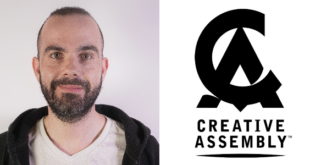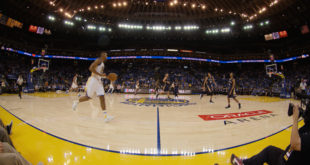[This feature was published in the April edition of Develop magazine, which is available through your browser and on iPad.]
What is it? Modo 701 is a modelling, painting and rendering tool renowned for its sculpting abilities, that also offers animation abilities
Company: Luxology
www.luxology.com
The Modo modelling, painting and rendering solution has long served artists across numerous creative sectors, and at this year’s GDC, details of the latest version were made public with the release of Modo 701.
The tool’s creator, Luxology, has put out a technology that it says will make a significant impact at games studios, particularly where workflows and efficiency is concerned.
At the heart of the new features introduced to Modo 701 is a completely revised procedural particle engine with a preset workflow. And new audio playback, a sound channel modifier and schematic improvements to help reduce scene graph complexity have debuted in this latest version.
But according to 701’s product marketing manager Shane Griffith, the emphasis on reworking Modo this time around has been about fine-tuning over reinvention.
“Modo was already a really complete content creation tool, so we’re just continuing to fill out the application, adding in new pieces with 701, and the particles in particular, which is significant,” says Griffith.
“But we’ve also been finishing out the dynamics system and everything else there. With 701, as before, Modo remains a complete, approachable and affordable solution. A lot of what went into 701 was refinement. We really considered what the customer feedback was, and looked at their workflows. We’ve really tweaked and enhanced as a result of that input.”
WORKING ON WORKFLOW
Luxology’s message, then, is that Modo 701 is the result of much polish and subtle reworking, but what will that mean to the games developers already familiar with Modo 601, and more importantly, how will it impact their daily grind?
“Immediately, it will be noticed in the performance,” insists Griffith. “A lot of the existing Modo systems went through deep refactoring and reworking for performance. There’s been a lot of effort with interactivity, and sculpting in particular is substantially faster than it was in the case of 601.
“Outside of that, the effort with the workflows and how the user works with in the schematic view; that has all become a lot faster and a lot more intuitive, in terms of how the content is really revealed to the artists. There will be a huge impact on the day-to-day workload for our users.”
Savings on time and workload will come as something of a godsend to busy artists, but the allure of the revised particle system remains Modo 701’s head-turning feature.
Modo 701 has been designed so the preparation and refinement of simulations of particles is as streamlined as possible, thanks to the introduction of a preset browser to accelerate layout and setup tasks.
Meanwhile, the underlying framework of the particle system is built around nodes to allow for more elaborate set-up processes.
“The particle system is pretty much entirely new in its approach,” offers Griffith. “The big difference is that it’s fully integrated with the dynamics system, and the dynamics system itself has been reworked to be much more core and internal to the product.
“So now you can have particles blasting other objects and knocking them down, or other objects interacting with particles, with those particles bouncing off them. It’s a really integrated system, and it’s really robust.”
JUMP IN THE LINUX
Beyond the feature set, as well as the established Mac and PC versions of Modo, a beta of a Linux build of 701 is well underway, and as Luxology and its partner company The Foundry look forward through a changing market, the tool is being adopted by an increasing number of smaller studios.
Typically popular with larger organisations, and especially in their modelling departments, Modo has for years been seen as a tool for pure, high-end original content creation.
“But there’s also those smaller independent development studios, and for them outside of modelling Modo is a complete solution, and in a lot of cases it’s about a third of the price of the big competitors,” concludes Griffin.
“It’s a great, affordable solution for them. Its runs on Mac and Windows and it’s coming to Linux, so it’s out there on a lot of different platforms they need it on.”
So, whether you’re looking for a triple-A suitable sculpting tool for your studio’s modelling experts, or an end-to-end middleware for art, animation, effects and rendering, 701 is worth consideration, distinct as it is among the plethora of options.
To read all of Develop’s Key Release technology profiles, visit our archive

 MCV/DEVELOP News, events, research and jobs from the games industry
MCV/DEVELOP News, events, research and jobs from the games industry



